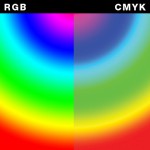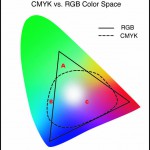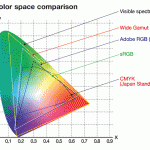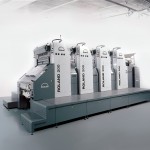REDGroup Retail, owner of two of Australia’s largest retail bookselling chains, Borders and Angus & Robertson (which between them account for around 20% of Australian book retailing), was placed in voluntary administration last week. The shockwaves have reverberated throughout the retail community and the business community generally.
Many reasons have been advanced. The three most common of which are that the business was under-financed, that is was badly run, and that the internet is killing retail bookselling — and perhaps retailing in general.
Richard Flanagan, writing in the Melbourne Age on Friday February 19th, observes
The failure of Borders and Angus & Robertson has little to do with online selling and much to do with corporate stupidity and greed.
REDgroup Retail, the owner, was a typical early noughties business, created by a private equity firm, overly indebted, seeking to make up the growing difference between its mounting debt burden and its more humble income by using its businesses to fleece customers and suppliers.
Thus in 2007 came the unedifying and frankly disgusting attempt by Angus & Robertson, bearer of the oldest and one of the proudest names in the history of the Australian book trade, to charge small Australian publishers for simply stocking their books, demanding up to $20,000 to make up for their supposed reduced profitability.
Jack Waterford, former editor of The Canberra Times doesn’t mourn the passing of these two chains, and put some flesh and bones on the claim that these shops have been badly run..
No one can claim absolute pleasure either at the closure of a bookshop or the end of the business and the resulting unemployment and misery, but the imminent demise of Borders leaves me fairly dry-eyed. Borders is, I think, one, if only one, of the reasons why good bookshops have become harder to find in recent years.
The first false impression that a person walking into a Borders, or a shop like it, is that it contains a lot of books. But typically the range of “real” books is very limited, and very narrow, and the overwhelming number of items in the shop are not real books at all. There is row upon row of books about cooking, about travel, personal development, fitness, romance, “manga”, and any number of unreadable failed books available at a massive discount.
But the selection of ordinary fiction, or good non-fiction, is quite limited and generally involves a minimal amount of floor space.
The business model of a Borders seems to regard books as having “use-by dates” — making it, usually, almost impossible to find another book written by a currently successful author, or a book that was quite popular only last year.
This is quite apart from the depressing lack of personality of such shops, which extends to the usual ignorance of staff about popular authors. Among the attractions of independent shops is that the owners and staff exercise their own, sometimes quirky, judgements about stock, have often read the products they sell, and know many of their customers well enough to have an idea of what they might like.
It seems that smaller, independent niche booksellers are not doing too badly. John Mangan, writing in The Age recently, quotes some of them.
Melbourne’s Little Bookroom, which believes it is the oldest children’s bookshop in the world, opened a branch in one of the city’s laneways. ‘‘We had growth in retail sales over Christmas. There seems to be a baby boom at the moment and our main problem has been that we need more and more and more beautifully illustrated books.’’
Independent bookshops say their expert knowledge, deep range and community ties put them on solid ground. ‘‘The industry is definitely changing,’’ Arwen Crawford, acting manager of the independent Brunswick Street Bookstore says. ‘‘ You’ve got to be quite on the ball in terms of adapting and knowing what people want. It’s not that people no longer want to read, it’s more to do with things like how you select your stock.’’
Fitzroy cookbook specialist Books for Cooks is similarly riding out tough times. ‘‘Retail is difficult now, that’s true,’’ says co-owner Tim White. ‘‘Selling cookbooks is what I aim to do. If I was to be a general retailer I’d need huge finance but a niche retailer can focus on what you do well.’’ In his case, that means not having the latest Masterchef book but instead stocking a great range of cookbooks going back to obscure 18th-century volumes — and trying the recipes.
I spent the best part of twenty years of my life as a bookseller. My wife and I, between us, spent the best part of ten years working for Angus & Robertson. Even then, twenty years ago, A & R was poorly run. The business was consistently operated by organisations who knew nothing about books — a large, now defunct, music retailer for instance. We had unimaginably large quantities of remainders (“unreadable failed books”) foisted upon us and completely unrealistic demands to achieve stock turn figures (read: carry less stock but achieve the same or better sales) that were completely impractical for bookselling. These policies all militated against carrying a healthy backlist.
The other main reason that has been advanced for the demise of these businesses is the increasing use of the Internet to purchase books. Personally I think there is some truth in this. However I don’t think it is necessarily a price issue. I have bought an enormous number of books from Amazon.com in the last few years. Most of these purchases have come about as a direct result of e-mails from Amazon which begin “We’ve noticed that customers who have purchased or rated . . . have also purchased . . . ” Many of the recommended books were not available in Australia. Price has rarely been an issue in deciding to buy the recommended titles.
Would it be altogether impossible for a smart software developer, well acquainted with the book industry, to develop a software application for small independent bookshops, which records customer details and details of their purchases, and then, as new publications come into stock, regularly generates e-mails similar to those which Amazon send out? I suppose that if I received that kind of e-mail from the two bookshops which I regularly frequent, I may well check out anything that interested me on the Amazon website, but most likely I would gratefully support the bookshop(s) that sent me such invaluable information.
If small, independent, bookshops could solicit reviews for their websites as well as replicating the excellent “look inside” feature of the Amazon website, they would be well on the way to ensuring they enjoyed a long and happy life!
Having run bookshops are some 20 years if I, as a bookshop manager, had to do this work, it would never be done. However what’s to stop publishers from providing the reviews and the “look inside” feature, and making it available — freely one would hope — to their customers, the bookshops?
A somewhat more alarmist and panic driven response to the collapse of the Borders and Angus & Robertson appeared under the name of James Kirby in the Melbourne age on Saturday, 19 February.
The spectacular collapse of the bookstore chains Borders along with Angus & Robertson means a lot more than just the latest crisis in the book trade; it’s a body blow for the modern heart of retail — the shopping centre.
Booksellers — the weakest link in the retail chain — have served as the litmus test for every phase of the internet’s endless ability to wreak havoc on old business models. If you think about it, the first business to be truly undermined by the internet was the book trade through Amazon.com a decade ago. Now the shopping mall finds that bookstores present what could be the next phase of a nightmare scenario.
Investors in Westfield would not be pleased to hear that REDgroup Retail — the holding company of the book chains that is now in administration — was the second biggest tenant of the giant shopping centre group. The disappearance of two bookshop tenants at the one time from our suburban malls is going to send shudders through every mall in the country.
Kirby concluded his article with the rather hysterical claim that “If shopping centres are to survive as the profitable behemoths we know today it will be as locations for cinema, food, services . . . anything except, well, shops”.
It seems to me that the collapse of these two chains presents Kainos Print as book printers, and authors generally with some interesting opportunities. I have always been a strong advocate of self publishing. I have sold self published books as a bookseller, I have commissioned and edited self published books, and now we print them and seek to help authors with marketing tips and tricks.
Thanks to the growth of digital printing, books can be printed in micro-quantities — anything from around ten copies upwards. We regularly print books in quantities of 100 or so. There is therefore no need to take inordinate financial risks. The market can be tested before contemplating expensive, long, print runs.
Authors earn royalties of between just two or three percent up to ten percent on books published the normal way. Authors who self publish can earn a vastly greater reward for their efforts. In most cases it should be possible to make 100% profit or more. To some extent this depends on the quantity printed. To a large extent it depends on the price set by the author — most set the price too low. I have known large print runs of books self published for fund raising purposes to sell for over $20.00, when the fund raiser paid less than $3.00
Thanks to the Internet authors can promote their books online. One of our customers, Ian Irvine, has a website which shows just what can be done. Click here for a link to Ian’s site (I should add that we print promotional material for Ian, not his books). Any author going down this path will probably need help to optimise their website so that it achieves high rankings in search engines, especially Google. We recommend Jasmine and Anup at Arrow Internet. You can access some tried and tested marketing tips and tricks, and other helpful articles here.
The other obvious opportunity for authors is to turn their books into eBooks and to promote those as well as their hardcopy versions. We have found that produce e-books involves a whole new learning curve and involves purchasing a new suite of software. It seems to us that this is a very new areas of software development and the ideal software does not yet exist. Nevertheless we have put quite a bit of effort into learning how to make e-Books, and it is a service we hope to offer very soon.
In conclusion, I would urge book lovers and authors not to be too despondent at this development. There are plenty of good bookshops around. For instance in Canberra there is the Paperchain in Manuka and Smiths and Electric Shadows in Civic. In Melbourne there is the Avenue Bookstore in Albert Park, Brunswick Bound on Sydney Road, the Sun Bookshop in Yarraville, Books for Cooks in Collingwood, Coventry Bookstore in South Melbourne, Metropolis in the city, Brunswick Street Bookstore in Fitzroy, Sunflower Bookshop in Elsternwick, Readers Feast in Melbourne’s CBD, Readings in Lygon St Carlton, Farrells Bookshop in Mornington and Robinsons Bookshop in Frankston. Some of these shops have a history going back at least thirty or more years and really know their stuff. I don’t know the book scene in other cities, but perhaps readers might like to add to this list from their own experience.
Authors, you should seriously consider self-publishing (which can actually make producing books profitable for authors).
Long live the book!!





